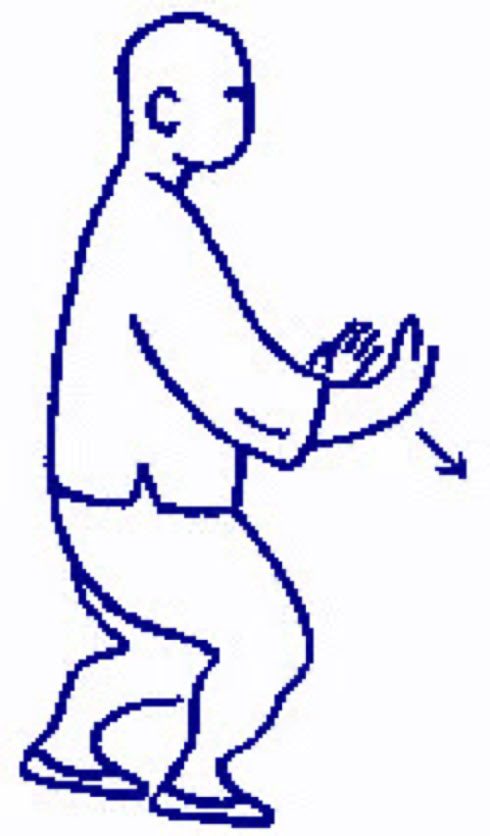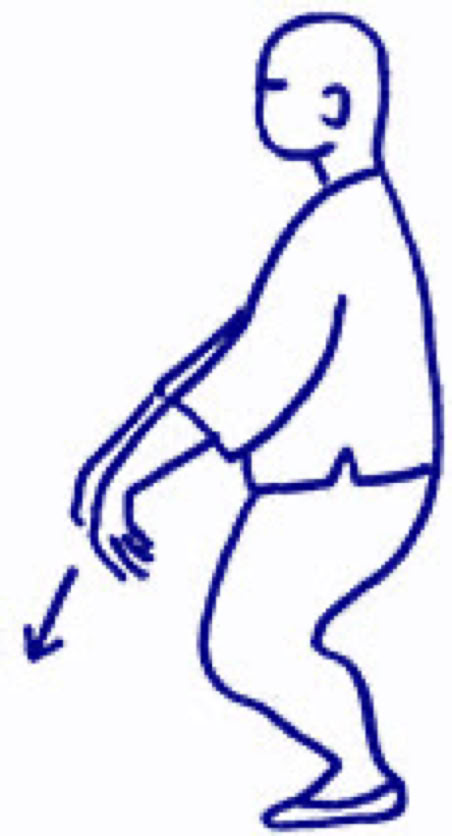

Ancient Taoism in Contemporary
Management Training & Martial Art


MARTRIX ORG.
Get your feeling working!
MARTRIX ORG.
Get your feeling working!
Ancient Taoism in Contemporary
Management Training & Martial Art


• HOME • About MARTRIX • Workshops • Trainers • Management Training • Coaching • Intuitive Boxing • Taikiken • Hachidankin • Baduanjin • 99-Taijiquan • Longevity • MartriX Exclusive Shop • Video Clips • Downloads • BrainQuakes• Index Page • Links • E-mail • HOME Nederlands •



HAKKEI - FA LI
Hakkei - Fa li is a group of exercises that help to develop ability of using force in "explosive" way. This ability cannot be developed without using basic training methods like ritsu zen -zhan zhuang, yuri - shi li and hai - moca bu. It doesn't mean that using only those methods is enough. Special hakkei -fa li training is necessary. All training methods are closely connected. Learning more advanced methods, you can better understand the basic ones. Taikiken or Yiquan doesn't mean years of standing in ritsu zen - zhan zhuang postures, with perspective of starting learning combat in distant future. What attracted many people to yiquan was that Wang Xiangzhai's students after only 2-3 years of study were able to achieve high level of combat skill. Although having some zhan zhuang, shi li and moca bu basics before starting learning fa li is necessary, there is no need to put it off too much.
Taikiken - Kination
Menu: TaiKi
The spontaneous way
What is Taikiken
Objective of Taikiken
Theory Taikiken
Taikiken Ritsu Zen
The six directions of power
Taikiken Han Zen
Taikiken Yuri
Taikiken Hai
Taikiken Hakkei
Taikiken Suishu
Taikiken Kumite
The key to fa li is co-ordination of the changes of tension and relaxation. Tension and relaxation are both very important. But because most people have the tendency for overtension, which makes impossible developing full dynamic force and speed, so it is necessary to put stress on relax. The act of issuing power is a process of changes of tension and relaxation of various groups of muscles. The time of issuing power (affecting object) should be as short as possible (though "pushing" force, which affects object for longer time is also used in yiquan). The force must be "whole" (zheng), and not "dispersed" (san), which means that the force of whole body must be used in coordinated and balanced way.
In yiquan the importance of mental activity in training is particularly stressed. Not only in basic methods as zhan zhuang or shi li, but also in fa li it is very important.
Engaging mind, imagination into training allows more full developing of our natural potential, which means also making easier developing of the ability of issuing force in explosive way.
To issue force in proper way the mind must be in state of active, alert readiness, as if you stand in front of dangerous opponent, ready to act, feeling that you are able to issue power which can break boards and stones. Depending of particular fa li exercise, various visualizations are used.
The learning of fa li often begins with fangsong fali (relaxed fa li). Actually it's kind of preliminary exercise, where stress is put mainly to relaxation, in order to prevent over tension and rigidity. You should imagine that you grab two handfuls of sand from a bowl placed on height of your belly, and in soft, circular movement toss the imagined sand forwards and upwards. Then softly, in circular way bring your hands down, to catch another handfuls of sand. The movement of hands must be coordinated with movement of whole body, which must move upwards and downwards, leaning forwards and moving back.
The force must be transmitted through whole body, from feet to head and fingers.
In the moment of issuing force ("tossing sand") front foot is "trampling." At beginning you should practice softly, comparatively slowly, gradually developing ability of sudden "impulsive" using of force, like cracking the whip.
KIAI - SHI SHENG
Kiai - Shi sheng - is working with issuing voice, which supports issuing force. Yelling can also influence opponents psychic (inducing fear or just hesitance), though it is not main aim of shi sheng. In the moment of issuing force the breath is suddenly
"falling downwards,""as if a rock falls into a well" underbelly muscles are suddenly tensed and instantly relaxed. Two basic sounds: yi and yo are often used. At first those are articulated separately and then linked together. Although at beginning you use loud voicing, you should gradually make it soundless, but achieving the same effect of supporting force like with loud voicing.

© MARTRIX org. Design by:
TheFeel.org multimedia
https://martrix.org
info@thefeel.org
Last modified
May 2025
